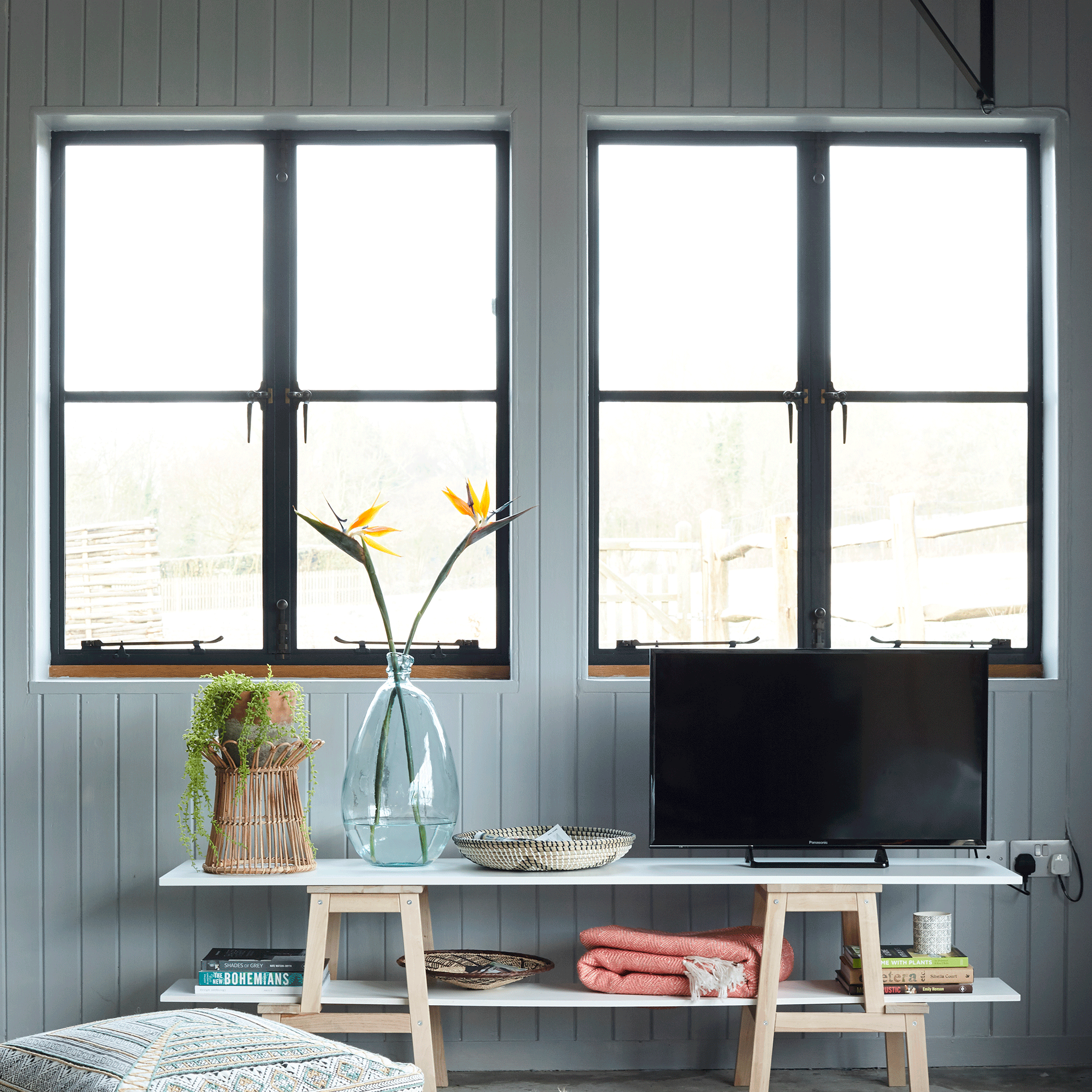Why am I getting condensation between double glazing? And what you can do to fix it
Although you might think your double glazing is on its last legs, that isn’t necessarily the case


‘Why am I getting condensation between double glazing?’ is a question nobody wants to ask themselves. But, unfortunately, this is a common problem that affects more homeowners than you’d think.
And while there’s nothing more annoying than waking up to misty, moisture-ridden windows, condensation is a normal part of home ownership. In fact, condensation can actually be a sign that your windows are working as they should and keeping warm air inside the house.
But what happens when you realise that the moisture is actually inside your double-glazed windows and not on the outside? Well, we asked the experts why it’s possible to get condensation build-up in between your double glazing and what you can do about it.

Why am I getting condensation between double glazing?
For the price you pay for double-glazing, you’d like to think that it would last forever. However, that’s not the case.
‘If you’re experiencing condensation, moisture, or large amounts of water in your double glazing, this would suggest that the seals have broken down,’ says Andy Simms, a trade expert from MyBuilder.com.
It’s important to note that this doesn’t mean that your whole window has failed, though. Instead, it just means that the air-tight seal that prevents leakage and draughts is no longer working as it should.
Normally, this is the result of your double-glazing reaching a certain age or being damaged in some way. In some instances, though, intense sunlight or heat can also damage the seals, as the heat forces the glass to expand and contract, putting pressure on these seals until they ultimately break.
Sign up to our newsletter for style inspiration, real homes, project and garden advice and shopping know-how
When this happens, there are two options; you could choose to get the double-glazing unit re-sealed, or you could replace the unit as a whole.

Of course, it’s up to you what you choose, and you should always reach out to numerous companies for quotes on the best course of action for your specific window. Andy suggests getting the unit replaced, though.
‘While there are some companies that can come out to clean and reseal, this can actually be more expensive than straightforward replacement. I would suggest you’ll be better off replacing them to get the problem sorted without further issues down the line,’ he says.
Condensation between the two panes of glass doesn’t necessarily mean that the seal has broken completely, though.
‘Condensation is essentially the water beads that form when hot moist air meets a cool surface,’ explains Adam Pawson, Marketing Director at Safestyle. ‘While it is more likely if the window seal has failed, it is a common issue and doesn’t necessarily mean there’s a problem with your windows.’

'In fact, I myself have experienced this condensation between the window panes of my double glazing. This was during a particularly damp time of the year and just after I had the room re-plastered. And in the end, it went away by itself.'
Every case is different, though, and it’s always a good idea to keep on top of any condensation you have to ensure it doesn’t escalate.
‘If it is not maintained efficiently, then it can develop into a dangerous mould which is linked to health conditions such as asthma, eczema and bronchitis,’ states Adam.
How to prevent condensation forming between double glazing
Dealing with condensation between your double glazing can be a hassle, which is why it’s always a good idea to try and prevent this from happening in the first place. This is how you can do that.
1. Keep an eye on the seals
Unfortunately, condensation between double-glazing panes could be due to a broken window seal. And if your double glazing is old, or you’re worried that it could have been damaged in some way, the best thing to do is keep an eye on the seals.
To do this, look at the seal that surrounds the panes, and check for any holes, cracks, or gaps. You may also feel a physical draught if the seals are broken.
If you spot a faulty seal before the condensation starts to form, you should be able to get ahead of the curve and put a plan into action before the inside starts to become misted.
2. Open your windows
Condensation is essentially the by-product of the cold air from outside hitting the warm air of your house, and one of the best ways to mitigate the difference between these two temperatures is to keep a constant temperate. And you can do this by opening your windows.
‘Try to regularly open windows to allow air to move freely and let moist air escape from the property. Ventilation systems such as extractor fans can also massively help to reduce the condensation in your homes,’ says Adam.
3. Use a dehumidifier
Investing in one of the best dehumidifiers for your home is never a bad idea. This appliance offers one of the best ways to remove excess moisture from your home, especially in areas not covered by extractor fans (i.e. not the bathroom or the kitchen).
A dehumidifier works by pulling the moisture from the air - and if there’s less moisture in the air, there’s even less to get trapped between the two panes of glass.

4. Wipe away excess moisture
If you start to notice water beading inside the two panes, there’s a high chance that you’ll also start to see moisture beading on the inside pane too. To stop one from worsening the other, try to wipe away any excess moisture as soon as you can.
‘If you do start to see water beads appearing on or around your windows when the temperature outside begins to drop, make sure that you’re clearing the area on a daily basis.’ explains Adam. ‘We’d suggest using a microfiber cloth to remove any dampness before applying any cleaning solution.’
Of course, it’s always a good idea to seek professional advice when you do start to see this condensation between your double glazing. Any leaks or draughts will affect the energy efficiency of your home, and maybe even cost you more money in the long run.
FAQs
Is condensation between double glazing normal?
Condensation on windows is normal, especially in the winter months when the outside temperate is so different to the inside temperature.
However, if you notice condensation between the two panes of glass in your double-glazing, there may be a bigger problem you need to address. Although it may be that your room is filled with more moisture than normal (for example, you have a leak or have recently plastered the room), it may also be that the seals on your windows have broken.
You can easily get these seals replaced, but sometimes it will work in your favour to get the whole glass unit replaced instead. So, seek professional help and get some quotes.
How do you fix condensation in between double glazing?
There are two options when it comes to fixing condensation in between double glazing. You can either choose to get the broken seals fixed, or you could get the whole glass unit replaced.
It’s important to weigh up these options and find a solution that works for you. If your double-glazing is old, it might be worth getting the whole unit replaced.

Lauren Bradbury has been the Content Editor for the House Manual section since January 2025 but worked with the team as a freelancer for a year and a half before that. She graduated with a Bachelor’s degree in English and Creative Writing from the University of Chichester in 2016. Then, she dipped her toe into the world of content writing, primarily focusing on home content. After years of agency work, she decided to take the plunge and become a full-time freelancer for online publications, including Real Homes and Ideal Home, before taking on this permanent role. Now, she spends her days searching for the best decluttering and cleaning hacks and creating handy how-to guides for homeowners and renters alike, as well as testing vacuums as part of her role as the Ideal Home Certified Expert in Training on Vacuums, having spent over 110 hours testing different vacuum models to date!